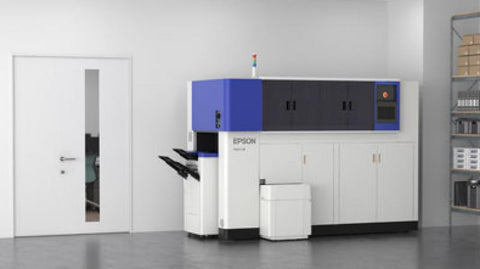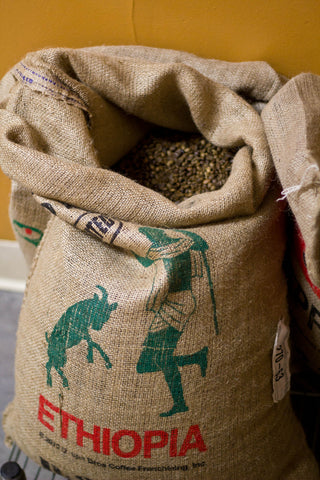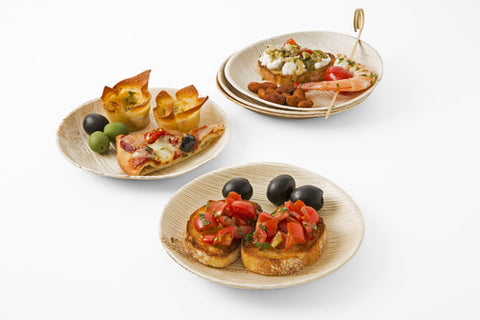- Continue Shopping
- Your Cart is Empty
New Report Highlights How Serious Our Plastics Problem
If you're striving to have a greener homer, it's easy to imagine that everyone else in the world is doing the same, that we're all looking out for the good of the environment. Sadly, that's not the case. Even though many people are trying to cut back on their use of plastics and to recycle more, plastic production is still at an all-time high and scientists are warning that something has to change for the sake of the planet.

image source: http://www.plasticsouplab.org
A study recently published by the Ellen Mac Arthur Foundation and the World Economic Forum revealed that plastic production has increased astronomically over the last 5 decades. In 1964, only 15 million tons of plastics were produced worldwide. Jump ahead to 2014, and 311 million tons of plastic rolled out of factories.
The study didn't just examine the massive explosion of the plastics industry. It also made some bleak predictions about the future. The researchers posit that within the next 20 years, the current rate of manufacturing will have doubled. By 2050, the scientists worry that 15 percent of the global annual carbon budget will come from plastics manufacturing and that plastic production will account for 20 percent of the world's use of oil.
During its discussion of the current global state of plastics, the report found that 8 million tons of plastic end up in oceans every year. If things continue at this rate, by 2050 the amount of plastic in the ocean will weigh more than the total weight of all of the fish in the ocean!
What might be equally distressing is that only about 14 percent of plastic packaging ever gets recycled and that overall recycling rates for plastic are even lower.
So what can we do?
First, we all need to continue to take steps to use less plastic, which you can do in your own home with cleaning products, tableware and personal care items from Paperless Kitchen. When you can't replace plastic, look for products made from recycled plastic, and do your part to recycle the plastic items that you use during the day.
Next, we all need to make an effort to let others know about the plastic situation. You could start by sharing this blog post on social media!
Offices Will Soon Be Able to Make Their Own Paper
Many companies are now instituting policies to reduce paper waste and encourage recycling. Not only do these policies help companies become more sustainable, but they also serve as cost-cutting techniques that reduce the expense of purchasing paper by reducing printing and other unnecessary uses of paper. Now, there is a new way for companies to become greener and conserve paper--a device that manufactures new paper from old paper right inside of office buildings.
The device in question is called PaperLab, and it was developed by the research and development team at Epson. The first models were set to be produced in Japan in January 2016 with worldwide sales expected to begin later this year.

image source: http://www.deccanchronicle.com/technology/in-other-news/090216/epson-s-office-machine-recycles-waste-paper-into-new-paper.html
With PaperLab, companies will be able to load used papers into a special chamber and then process it into new sheets of paper. The machine is flexible, allowing users to set a specific size, thickness and type.
Obviously PaperLab will help companies reduce their cost of purchasing paper and become greener, but Epson has pointed out that it has another big benefit--security. Maintaining client and corporate confidentiality is of the utmost importance for companies today, and many companies struggle with how to keep shredded paper documents secure until they can be picked up by recycling companies. PaperLab will make it possible to immediately recycle shredded confidential documents, eliminating the risk of theft.
There is no official word yet on when PaperLab will be available in the United States or what its cost will be; however, for companies that use large amounts of paper, it's easy to imagine that the unit would pay for itself over time.
Paperless Kitchen Tested: Go Green App Review
We're back with another green app review! This time, we're taking a look at the app Go Green, which was developed by Web Works. The app is available for Android and iOS devices. The iOS device is compatible with iOS version 2.0 or later, so you can even use it on older models.
What Is Go Green?

Go Green is an app that shares tips that can help you lead a greener life. The tips cover a wide variety of topics from cleaning to recycling to conservation to choosing eco friendly products at the store. Each time that you sign into the app a new tip is displayed. You can touch an icon to go back and read all of the previous tips if you wish.
Pros of Go Green
Go Green has a number of positive features, including:
- Ease of Use. The app is very straightforward. You actually don't have to do anything but launch it and read.
- Great for Daily Use. This app is a good one for those who want to learn one new green thing per day.
- Useful Information. The majority of the tips are helpful and aren't things you would immediately think of. Generally, the tips go beyond the basic ones provided by most similar apps.
- Completely Free. The full version of Green Tips is free to download and to use. There are no in-app purchases of any kind. There are ads, but they're not obtrusive.

Cons of Go Green
- Inconvenient for Reading Multiple Tips. If you have time to kill and you want to read a number of tips in one sitting, you have to keep exiting the app and coming back. It would be nice if you could flip through and see new tips as well as the old tips.
- Some Tips Are Incomplete. While all of the tips are factual, some of them are greener than others. For example, one tip recommends using a laptop computer instead of a desktop computer to conserve energy. This is accurate but it doesn't tell you that you can't leave the laptop plugged in all the time if you want to conserve.
The Final Takeaway
Based on using Go Green for a few days, I find the program to be one of the better green tips apps on the market today. It's definitely worth taking a look at, especially since it won't cost you anything to try! Give the app a spin and let us know what you think in the "Comments" section.
10 Upcycled and Recycled St. Patrick's Day Crafts

St. Patrick's Day is just a couple of weeks away, and if you want to decorate the house or deck yourself or your kids out for the holiday, you have a great opportunity to upcycle and recycle some items. Here are 10 of our favorite eco friendly recycled or upcycled St. Patrick's Day craft ideas:
1. DIY Pots of Gold for St. Patrick’s Day - Laughing and Losing It has a fun tutorial on how to turn old paper towel rolls or toilet paper rolls into pots of gold for the kids.
2. Lucky Leprechaun's "Pot of Gold" Kid's Craft - Neetu at Super Mommy will show you how to use a rinsed plastic takeout container to make an adorable pot of gold with your kids.
3. Pinch Proof DIY St. Patrick's Day Headband - In this tutorial, The Brass Paperclip Project shows you how to use old belts that your kids have grown out of into rainbow headbands for St. Patty's Day or any other occasion.
4. Beer Bottle Candle Holders - Join Jessi at Practically Functional to learn how to transform green beer bottles into pretty votive holders.
5. Recycled champagne cork St. Patrick’s Day earrings tutorial - Make It Easy Crafts has an adorable DIY shamrock earrings project made out of old corks.
6. St. Patrick's Day Clothespin Wreath - Got some old clothespins lying around? Transform them into a festive wreath with the help of Patti Allen from Celebrations.
7. Shamrock Mason Jar Luminaries - Take old mason jars and give them new life with this project from Pauline Molinari from Club Chica Circle, as featured on Mom 4 Real.
8. Tutorial: St. Patrick's Day Rainbow Mini Book Cover - Danielle Hunter from EcoScrapbook has found the perfect use for those plastic tubes that are left behind when your kids finish the bath crayons!
9. Upcycled & Kid-Sized St. Patrick's Day Bangles - Also from EcoScrapbook is this great craft that uses the empty rolls from duct tape or masking tape to make St. Patty's Day bracelets for kids.
10. Upcycled St. Patrick’s Day Shamrock Craft - This unique project from Nicolette at Momnivore's Dilemma uses broken or scratched CDs and DVDs to create a lovely shamrock craft.
Which one of these is your favorite? Let us know in the comments section.
10 Crafty Ways to Upcycle Old Greeting Cards

Sending greeting cards is a festive part of the holiday season, and it's always nice to hear from friends and family. Photo cards can easily be added to albums after the holidays, but just what can you do with all of those greeting cards if you don't want to contribute to paper waste this holiday season?
To help you decide what's best to do with your cards, we bring you this roundup of creative ideas from the blog and online magazine world:
1. Paper Garland - You can use any old paper, including your Christmas Cards to make this great Paper Garland project dreamed up by Shellie Wilson of Craftbits.
2. Menu Holders - Make your holiday dinner extra fancy by using different greeting cards to make this project from Country Living.
3. Paper Quilt - The paper quilt project from Linda & Harriet allows you to keep your Christmas cards displayed in a transformed way all year round.
4. Mason Jar Lids - If you'll be giving away any homemade treats in mason jars this season, use your cards to decorate the lids as shown in this tutorial from The Sweet Spot.
5. Chargers - Better Homes and Gardens has a great tutorial on how to convert your Christmas cards into the border for custom chargers for your holiday dinner table.
6. Wine Gift Label - Also from Better Homes and Gardens is this crafty idea for making wine gift labels out of your Christmas cards.
7. Christmas Wreath - Turn those old holiday cards into a festive wreath with this guide from Good Housekeeping.
8. Ornaments - Scoutie Girl has a very cute Christmas ornament idea made entirely from old Christmas cards. You could do an entire tree with these!
9. Gift Bows - Save money on gift bows by using the tutorial from How About Orange for making a DIY bow.
10. Necklace - Make some homemade beads for a necklace with this tutorial from ILovetoCreate. These could even be given as holiday gifts!
Which of these projects is your favorite? Tell us about it in the "Comments" section.
General Motors Manufacturing Plant Goes Landfill Free
Many businesses are struggling to reduce the amount of waste that they produce and dealing with many obstacles along the way. A recent press release shows the importance of not giving up on the goal of being waste-free, as it explains how a large manufacturing facility in Rochester, New York, managed to go completely paperless. That's quite a feat for 1.7 million square foot facility.
It took an effort over 4 years to finally eliminate all landfill-bound waste from the facility and required the teamwork of every employee. Some of the changes the company implemented to reach its goal were quite simple. For instance, management moved the location of recycling bins to make them more accessible in office areas, on the shop floor and outside in dumpster areas.
The company also did an excellent job of communicating with employees about what the benefits of their waste reduction efforts are. They shared information about how much the company saved by recycling. In addition, they showed employees profiles about the various recycling facilities that accepted their paper, cardboard and other recyclable waste. The training and communications helped to get everyone on board.
While GM did have to invest in the development of new technologies to eliminate much of their industrial waste, many of the changes the company made could be easily implemented at your business or any other in the country.

Burlap Coffee Bags Are Being Used to Make Paper
Coffee roasters and coffee shops across the country go through a large number of large burlap bags, which usually end up in landfills once they are empty, as often they are too worn to be reused. A St. Louis-based inventor named Ted Gast has come up with a way to turn this burlap into specialty papers.
To create his line of papers, Gast has partnered with George A. Whiting Paper Co. in Menasha, Wisconsin. The bags are processed and broken down into their jute and sisal fibers and then turned into specialty papers. The name of the product is Kona Paper, a reference to the variety of coffee that comes from Hawaii.
Kona Paper is currently being used by Caribou Coffee Company for business cards and coffee sleeves as well as by other coffee companies across the country. Gast and the George A. Whiting Paper Co. now plan to start producing scrapbooking papers and other varieties of specialty paper with their recycled burlap fibers.
You can check out the official website here.

The New Way to Make Paperless Paper Chocolate Wrappers
We recently discussed some ideas on what to do with paper candy wrappers once Halloween has ended, but if British paper company James Cropper's new technology takes off, paper-based candy wrappers may soon become a thing of the past.
The company has developed a new technology that uses the waste left over from processing cocoa beans to make wrappers for packaging. The recycling process innovated by the company would use 3.5 million metric tons of chocolate skins per year, keeping agricultural waste from ending up in over-crowded landfills. To make the process even more eco-friendly, the natural color from the cocoa husks is retained, eliminating the need for chemical dyes.
You may remember the James Cropper company from a story that we did earlier this year on plastic cup recycling. This new technology shows how this corporation, although a paper manufacturer, is truly working to make the world a greener and more paperless place.

Roasted Cocoa Beans
University of Illinois Making Their Own Paper

Prairie Grass one of the crops being used to make paper at the University of Illinois
A project called The Fresh Press at The University of Illinois is putting agricultural waste to good use and helping the college save paper. The project is run by two professors and two research assistants.
The team gathers waste from various sources, including the on-campus Sustainable Student Farm. Then, the waste is chipped, soaked, cooked, mixed, screened and pressed into paper. Various projects on campus have made use of the paper produced by the team, and some of their handmade papers are now being used by the university's Book Arts Co-op club.
Funded by the university, The Fresh Press is making good use of waste, protecting trees and spreading an important environmental message. Way to go, U of I!
Waste Paper Find Its Way Into the Construction Industry
An exciting new development from a project in the European Union shows a promising use for waste paper. The InsulaTFH project has recently unveiled a new type of building insulation made from processed cellulose extracted from waste paper.
Cellulose is a natural choice for use in the construction industry because it has the ability to greatly insulate homes and businesses. The researchers involved in the InsulaTFH project developed an economical method of extracting the cellulose and then mixed it with fire-retardant materials to ensure safety once the insulation is installed. To cut down on fuel consumption, the paper pulp used in the manufacturing of the insulation is sourced from mills located in the same communities as the plants.
The InsulaTFH project project was funded by the EU as part of an ongoing push to reduce the amount of waste that ends up in landfills across the continent. The new insulation will soon be mass produced at facilities in Ireland, Belgium and Germany, but there's no word about how quickly this eco-friendly insulation will be available in the United States.








